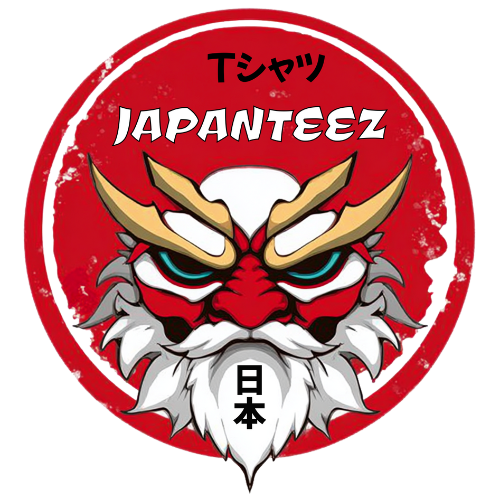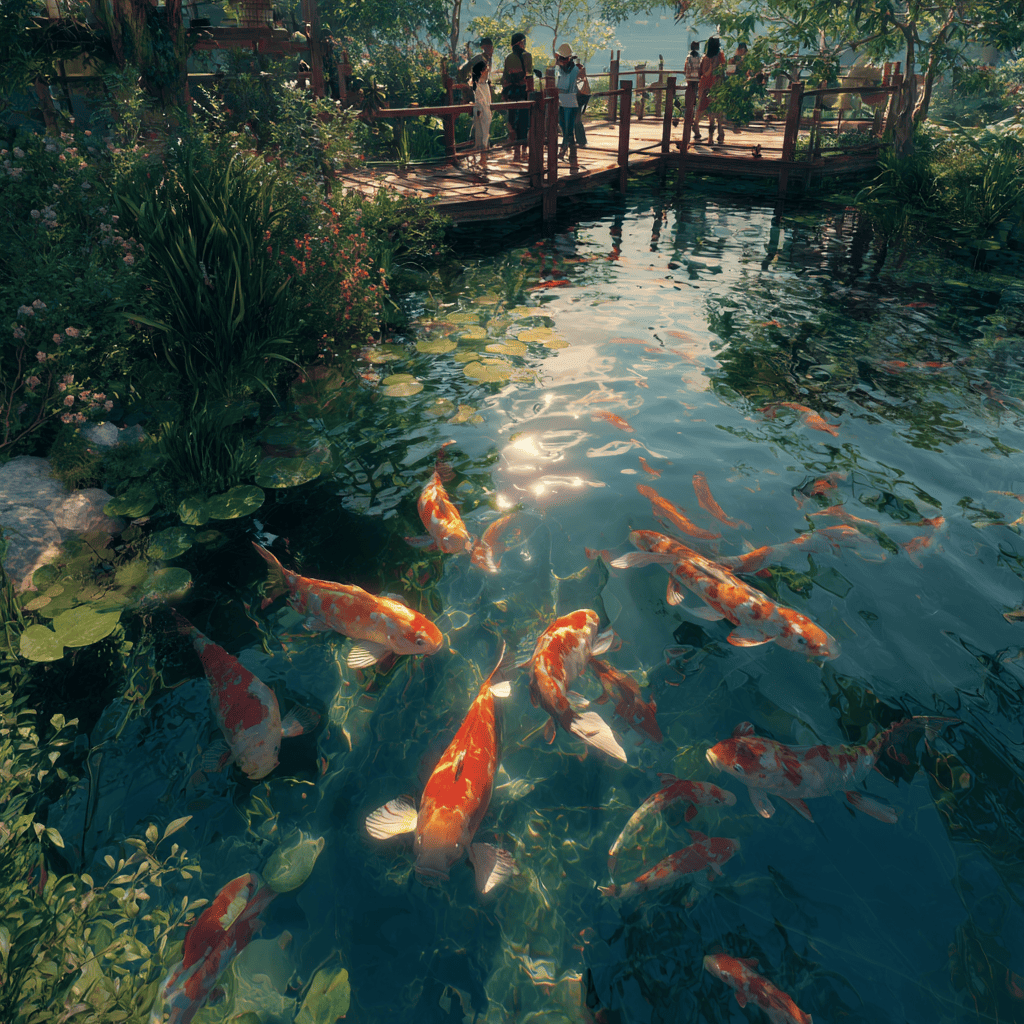What Do Koi Fish Eat? A Complete Guide for Beginners
Koi fish are famous for their bright colors, graceful movements, and long lifespans. But behind their beauty is a key question many pond owners and beginners ask: what do koi fish eat? Knowing the answer can make all the difference in keeping your koi healthy, vibrant, and full of energy.
In this guide, we’ll cover everything from the foods koi thrive on to seasonal feeding tips and common mistakes to avoid. By the end, you’ll understand exactly how to feed your koi properly—and even discover how their elegance has inspired Japanese art you can wear, like the Koi Fish T-shirt.
What Are Koi Fish?
Before we dive into their diet, let’s quickly understand what koi fish are. Koi are ornamental varieties of the common carp, originally bred in Japan for their stunning colors and patterns. They have been admired for centuries, not only for their beauty but also for the symbolism they carry—strength, perseverance, and harmony.
Koi can grow quite large, sometimes reaching up to three feet in length under optimal conditions, and can live for decades. Their long lifespan and striking appearance mean their diet plays a critical role in keeping them healthy and vibrant.
Why Diet Matters for Koi Fish
A proper diet isn’t just about filling their bellies. For koi fish, what they eat directly affects:
- Color brightness: The reds, oranges, and golds of koi scales are enhanced by certain nutrients.
- Growth rate: Koi that eat a balanced diet grow steadily and reach their full potential size.
- Immune system: A healthy diet helps them fight diseases and survive in different water conditions.
- Longevity: Koi with proper nutrition can live 50 years or more, while poor diets shorten their lives drastically.
The Basics: What Do Koi Fish Eat?
Koi fish are omnivores, which means they eat both plants and animals. In the wild, they forage for a variety of foods. Here’s a breakdown of what koi eat:
1. Commercial Koi Food
Most pond owners feed their koi pellets or flakes made specifically for koi fish. These foods are formulated with all the essential nutrients:
- Proteins: For growth and muscle development.
- Fats: For energy and healthy skin.
- Carbohydrates: For general energy.
- Vitamins and minerals: To support immune function and overall health.
Commercial koi food comes in different types for various seasons. For example, high-protein formulas are ideal for warm months when koi are most active, while wheat germ-based diets are better for cooler months, as they’re easier to digest.
2. Vegetables
Koi love vegetables. You can feed them things like:
- Lettuce or spinach (blanched to soften)
- Peas (shelled)
- Watermelon and cucumber slices (occasionally, as treats)
Vegetables provide fiber and help koi maintain a healthy digestive system.
3. Live Foods
In the wild, koi enjoy small insects, worms, and even tiny crustaceans. Pond owners can offer:
- Earthworms
- Bloodworms
- Daphnia (tiny freshwater plankton)
Live foods are high in protein and are great for koi growth and energy.
4. Treats
Sometimes, you can give your koi special treats to enhance their color:
- Shrimp or krill
- Spirulina (a blue-green algae)
- Color-enhancing pellets (commercially available)
Treats should be given sparingly to avoid digestive issues and maintain water quality.
How Often Should You Feed Koi Fish?
Feeding frequency depends on water temperature and koi size:
- Above 68°F (20°C): Feed 2–4 times per day in small amounts. Koi are most active and can digest food efficiently.
- 59–68°F (15–20°C): Feed once a day. Their metabolism slows down as temperatures drop.
- Below 50°F (10°C): Avoid feeding. Koi essentially stop eating and digesting at cold temperatures.
Tip: Only feed as much as koi can consume in 5 minutes. Overfeeding can pollute the pond and harm their health.
Seasonal Feeding Tips
Koi feeding changes with the seasons:
Spring
As temperatures rise, koi wake up from their winter dormancy. Start feeding them easily digestible food gradually. Avoid high-protein foods at first—start with wheat germ-based diets.
Summer
Koi are most active in summer. Feed protein-rich pellets to support their energy needs and growth. Keep an eye on water quality, as leftover food can cause ammonia spikes.
Fall
As temperatures start to drop, switch back to wheat germ foods. Reduce feeding gradually to prepare them for winter.
Winter
Koi rarely eat in winter. If water temperature is below 50°F, do not feed them. Their metabolism slows, and uneaten food can pollute the pond.
Homemade Koi Food: Is It Worth It?
Some koi enthusiasts enjoy making homemade food for their fish. Ingredients can include shrimp, fish fillets, gelatin, and vegetables. Homemade food can be healthy but requires careful balancing of nutrients.
For beginners, high-quality commercial pellets are often the best choice—they’re designed for koi health and are easy to store and feed.
Common Feeding Mistakes to Avoid
Even if you know what koi eat, mistakes happen. Here are some common feeding errors:
- Overfeeding: Leads to obesity, poor water quality, and diseases.
- Feeding inappropriate food: Bread, chips, or fatty human food can harm koi.
- Ignoring seasonal changes: Feeding high-protein food in winter can stress koi and cause digestive issues.
- Feeding in polluted water: Make sure the pond is clean—polluted water can affect digestion.
By avoiding these mistakes, you ensure koi remain healthy and colorful.
How Feeding Affects Koi Colors
The colors of koi are not only beautiful—they’re indicators of health. Certain foods enhance colors:
- Red/orange: Foods with carotenoids (shrimp, krill, spirulina)
- Blue/black: Diets rich in natural pigments
- Yellow/gold: Standard koi food usually maintains these colors
Balanced nutrition keeps koi bright and vibrant, which is especially important for ornamental ponds.
Fun Fact: Koi Fish and Japanese Culture
Koi aren’t just pets—they’re symbols in Japanese culture. They represent perseverance, harmony, and strength. Many koi enthusiasts in Japan even celebrate Koi festivals, where the fish’s beauty and meaning are honored.
This cultural significance is why koi-inspired art has become so popular. In fact, you can celebrate the beauty of koi in your everyday life—not just in your pond. Check out our Koi Fish T-shirt – Koi Harmony, inspired by the elegance and balance of koi fish. It’s a subtle way to bring a piece of Japanese symbolism into your wardrobe while supporting your love for these amazing fish.
How to Know If Your Koi Are Eating Well
Koi that eat well and get proper nutrition show it in several ways:
- They swim actively and explore the pond.
- Scales are shiny and vibrant.
- Growth rate is steady and visible.
- Appetite is healthy and consistent (except in winter).
If you notice koi ignoring food or losing color, it may indicate a health problem or an unsuitable diet.
Conclusion
So, what do koi fish eat? In short, they thrive on a balanced diet of high-quality pellets, vegetables, and occasional live food or treats, adjusted for season and water temperature. Feeding them properly not only keeps them healthy but also enhances their vibrant colors and longevity.
Next time you watch your koi glide through your pond, remember that every bite counts toward their well-being—and perhaps inspire a little koi-themed joy in your daily life with items like the Koi Harmony Tee. Who knew learning about koi food could bring harmony both to your pond and your wardrobe?

